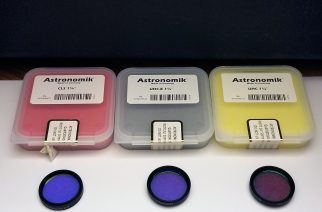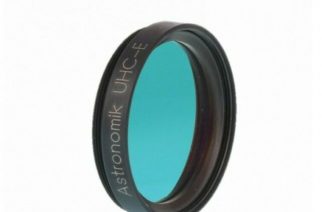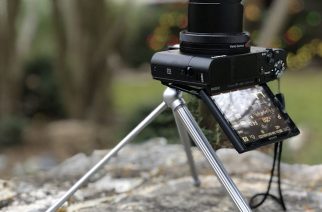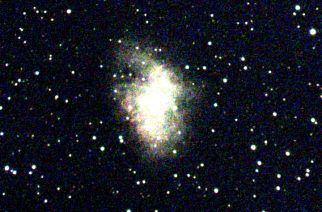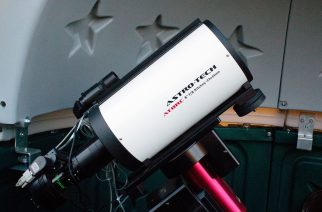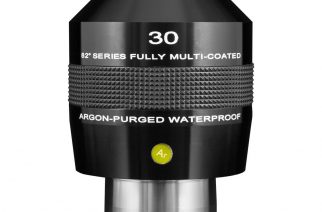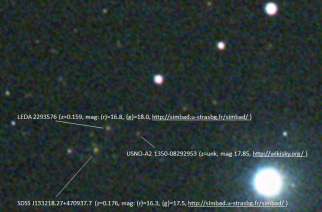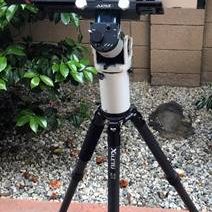In this article Matt Harmston shows that, in theory, establishing ideal backfocus is straightforward: Insert spacers and accessories between the two surfaces such that their collective thicknesses match the manufacturer specified back-focus distance. However, as he details, in practice the fine-tuning of back-focus distance is a precision exercise. A few […]
Reviews
Narrowband Sulfur-Hydrogen-Oxygen On-The-Cheap
In this review Jim Thompson discusses explain the process of capturing data to produce a narrowband Sulfur-Hydrogen- Oxygen (SHO) image using a OSC camera. The final title I selected for this article, “SHO On-The-Cheap”, is perhaps not the most descriptive, but it is at least better than my original title: […]
Astronomik Visual Filters Review Part 2
For the ATT Volume 14 Issue 9, I wrote an article describing my experiences under light-polluted skies using Astronomik’s 1.25” UHC, UHC-E, and CLS filters along with the absence of a filter. The upshot of that article was that such filters prove their value by revealing many deep sky wonders […]
Astronomik Filters for Light Polluted Skies Part 1
Over the years, I’ve shared the eyepiece with family, friends, and myriad others. Telescopes so often capture the attention of onlookers, don’t they? Regardless of attention garnered, interested onlookers often don’t consider getting a telescope because they find themselves within the pale confines of light-polluted skies. While light pollution interferes […]
Baader MaxBright II Binoviewer
It was turning into a beautiful evening as the summer sun was beginning to set. The sound of children’s laughter competed for the chirping of crickets as they took advantage of the warm breeze and late summer sunset. To the southeast, mighty Jupiter and noble Saturn were beginning to become […]
Coat Pocket Astronomy
Editors Note: In his Coat Pocket Astronomy article Rob Pettengil takes miniature astroimaging to the test with gear that literally fits in his pocket. Images 3 – 9 can be found at the end of the article. My affection for the miniature drove my interest in ultra-light astrophotography. I like […]
Astronomik Visual Filter Review
Editor’s Note: In his Astronomik visual filter review Matt Harmston does a deep dive into using Astronomik Filters for visual observing under light polluted skies. This article originally appeared in Astronomy Technology Today Issue 9, 2020. This article has been updated with new testing notes and can be found here. […]
Live High Dynamic Range Viewing for Video Astronomy
Live High Dynamic Range (LHDR) techniques for video astronomy were discussed in the Issue 3, 2019 edition of Astronomy Technology Today. In it, techniques were presented that enabled video astronomers to access faint detail without overexposing bright areas … even before any postprocessing took place. In other words, these were […]
The GSO 8-Inch Ritchey–Chrétien Telescope
I recently reviewed a Guan Sheng Optical (GSO) 8-inch classical Cassegrain telescope for Astronomy Technology Today. In this article, I review the GSO 8-inch GSO Ritchey–Chrétien. The classical Cassegrain would be the better choice for visual use, while the Ritchey–Chrétien is the better instrument for astronomical imaging. American astronomer George […]
Explore Scientific Eyepiece Review of the 68° and 82° Eyepieces
Explore Scientific Eyepiece Review When I first bought my first telescope in the 1970, there were many types of eyepieces to choose. The designed had names like Ramsden, Erfle, Huygen, Kellner, König and Orthoscopic, to name a few. Each had pros and cons. Eye relief, exit pupils, and field of […]
Apparent Magnitude – What Is It?
Apparent magnitude is something that every beginning and experienced telescope owner has to consider. I sometimes reminisce about my first telescope, an entry-level 115mm reflector. My family let me pick out (but not touch) the scope and assorted accessories well before Christmas, a holiday that rapidly became an eggnog-induced flurry […]
Rainbow Astro RST-150H Telescope Mount Review
Sorry Rainbow Astro! “Teeny.” “Tiny. Can lift it with one hand.” These are not words one hears applied to a goto smooth-tracking EQ mount. Normally it’s: “Big.” “Heavy.” “Gah, my back! Someone help me!” But the Rainbow Astro RST-150H (Image 1) really is a one-handed telescope mount that’s super light. […]




